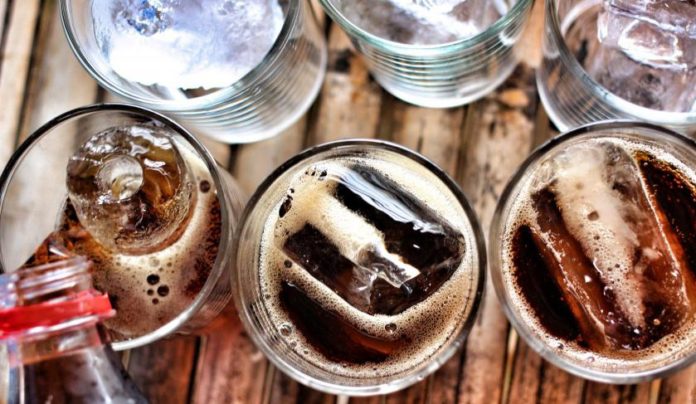
Half of Americans over age 6 may be exposing themselves to a cancer-causing chemical daily, according to a new study published online Wednesday in the journal PLOS One.
Previous data have shown that many sodas with caramel coloring contain the human carcinogen 4-methylimidazole (4-MEI), a compound that is sometimes produced during manufacturing and is known to cause cancer. Researchers from Johns Hopkins University aimed to pinpoint cancer’s potential burden on the American population by estimating how many Americans drink these sodas regularly and how much of the human carcinogen is actually present in soft drinks.
The study matched laboratory findings from Consumer Reports, which analyzed 4-MEI concentrations in over 100 soft drink samples purchased in the U.S., with population beverage consumption data from the National Health and Examination Survey (NHANES).
The JHU team found that 44 and 58 percent of kids and adults, respectively, drink at least one can of soda per day. In the analysis of 4-MEI concentrations, the researchers found that levels of the carcinogen varied, even for the same type of beverage. Among diet colas, for example, certain samples had higher or more variable levels of the compound, while other samples had low concentrations of 4-MEI.
“Soft drink consumers are being exposed to an avoidable and unnecessary cancer risk from an ingredient that is being added to these beverages simply for aesthetic purposes,” said senior author Keeve Nachman, director of the food production and public health program at the Center for a Livable Future (CLF), Johns Hopkins’ diet and food production arm, and an assistant professor at the Johns Hopkins Bloomberg School of Public Health. “This unnecessary exposure poses a threat to public health and raises questions about the continued use of caramel coloring in soda.”
There is no federal limit for 4-MEI in foods or beverages, although Consumer Reports petitioned the Food and Drug Administration (FDA) to set limits on the potential carcinogen last year.
“An FDA intervention, such as determining maximum levels for 4-MEI in beverages, could be a valuable approach to reducing excess cancer risk attributable to 4-MEI exposure in the U.S. population,” Nachman said.
The samples in the study primarily came from California and New York state, and the researchers noted that some of the soft drinks in California had lower levels of 4-MEI than samples sold outside the state. The authors said the lower traces of 4-MEI in that region’s samples may be because food and drink manufacturers are required by California state law to post a warning label on any product that exposes consumer to more than specific amount of 4-MEI per day.
“This new analysis underscores our belief that people consume significant amounts of soda that unnecessarily elevate their risk of cancer over the course of a lifetime,” said Urvashi Rangan, PhD, executive director of the food safety and sustainability center of Consumer Reports.
“California has already taken an important step by setting a threshold,” said Dr. Rangan. “We believe beverage makers and the government should take the steps needed to protect public health.”
Of course, reducing your consumption of soda and other sugary beverages will benefit your health in more ways than just one. Daily consumption of sugar-sweetened drinks is widely linked to diabetes and obesity, while more recent evidence has linked sugary drinks to early puberty in girls and increased breast density in women — both of which raise the risk of breast cancer. Unfortunately, the sugar-free versions of these beverages may not be any healthier: Even diet soda has been implicated in the development of diseases like obesity and diabetes.
